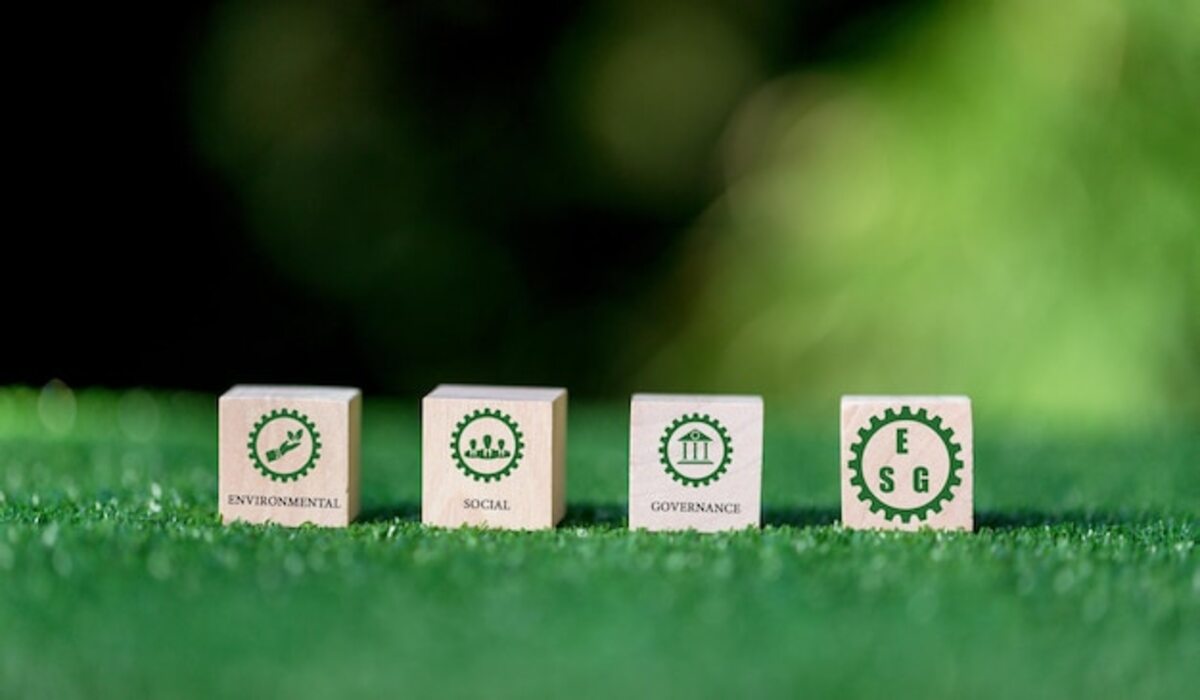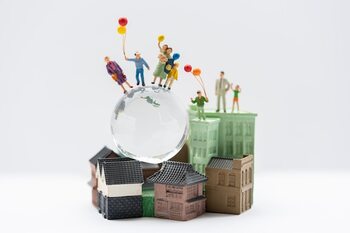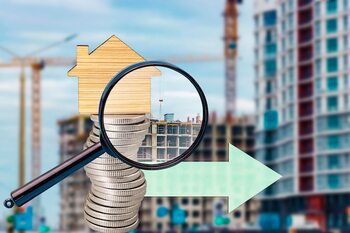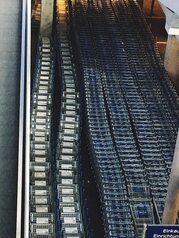The influence of sustainable development on real estate appreciation

The growing concern for the environment has led to a significant change in the way the real estate market is valued and developed. In this context, sustainable development is not just a trend, but a crucial factor that directly impacts the appreciation of properties. This article will explore how eco-friendly practices and sustainable projects are transforming the perception of real estate value, making properties more attractive and profitable investments for conscious buyers. Discover how sustainability can be your best ally in the real estate world!
The relationship between sustainability and property demand
The relationship between sustainability and property demand has become increasingly evident in a market that seeks to align with the values of modern consumers. Nowadays, buyers are not only looking for a property that meets their basic needs but also a home that reflects their commitment to environmental preservation. This has led to an increase in the demand for sustainable housing, which incorporates features such as energy efficiency, the use of recycled materials, and water management systems. As a result, properties that meet these sustainable criteria tend to have a higher appreciation compared to those that lack such attributes.
Moreover, the implementation of sustainable practices in real estate development not only benefits the environment but also improves the quality of life for its residents. Green spaces, energy-efficient buildings, and communities designed to promote a healthy lifestyle are aspects increasingly valued by buyers. This trend is driving developers and investors to adopt higher ecological standards in their projects, which further reinforces the connection between sustainability and demand. In this context, properties that integrate principles of sustainable development are better positioned to maintain their long-term value and attract an audience conscious of environmental impact.
2. Eco-friendly projects: How do they increase property value?
The implementation of eco-friendly projects in real estate development not only addresses an environmental need but also translates into a significant increase in property value. Today's buyers increasingly value sustainable features, such as renewable energy systems, recycled materials, and efficient building techniques. These improvements not only promote a healthier and more environmentally friendly lifestyle but also generate long-term savings in operating costs, making them an attractive option for those seeking a smart investment. Therefore, integrating sustainable practices can result in a notable increase in resale value.
Additionally, eco-friendly developments are often located in strategic areas that promote sustainable mobility, such as the use of public transportation or proximity to green spaces. This privileged location adds another level of attractiveness for potential buyers and tenants, which in turn contributes to the increase in price per square meter. By prioritizing projects that meet environmental and social criteria, developers are not only making an ethical choice but also a strategic one: they are positioning themselves favorably in an increasingly competitive market that is informed about the importance of sustainable development. This reinforces the idea that sustainability is now synonymous with quality and prestige in the real estate sector.
3. The impact of green certifications on real estate value
Green certifications, such as LEED (Leadership in Energy and Environmental Design) and BREEAM (Building Research Establishment Environmental Assessment Method), have gained prominence in the modern real estate market. These accreditations not only validate the sustainability of a building but also ensure energy efficiency, waste reduction, and minimal environmental impact. Buyers increasingly seek properties with these certifications, as they offer tangible benefits such as lower operating costs and a healthier environment. As a result, certified properties tend to have higher demand in the market, driving their long-term value.
In addition to the immediate appeal to buyers, green certifications provide a sense of social responsibility that can be a key differentiator in a competitive market. Properties with these credentials often stand out in listings and promotions, attracting a clientele committed to the environment. This approach not only increases real estate value by incorporating sustainable practices, but also contributes to the creation of more resilient and ecologically conscious communities. Consequently, investing in green properties is not only beneficial for the current owner, but also lays the groundwork for future appreciation in a world where sustainability becomes the norm.
4. How sustainable location redefines urban areas
Sustainable location is redefining urban areas by incorporating design principles that prioritize quality of life and respect for the environment. Cities that were once merely considered economic centers are now evolving into more livable environments, where access to green spaces, efficient public transportation, and community services are essential. This transformation not only enhances the aesthetics and functionality of urban space but also attracts a new type of resident: those who value both comfort and sustainability. By doing so, these areas become more desirable and, therefore, increase their real estate value.
Moreover, initiatives to create sustainable neighborhoods foster greater social cohesion by encouraging community participation in ecological projects. Spaces such as urban gardens, local markets, and pedestrian zones not only beautify the environment but also promote a healthier and more active lifestyle. This community-centered approach generates a sense of belonging among residents and enhances the area's appeal to potential buyers and investors. Thus, a well-designed location with sustainable principles translates into a significant increase in its real estate value, demonstrating that investing in sustainability is synonymous with long-term profitability.
5. Current trends in sustainable development and their impact on investments
Sustainable development has become a fundamental pillar for investment decisions in the real estate sector. Investors are increasingly interested in properties that incorporate environmentally friendly practices, such as the use of renewable energy, efficient water management systems, and sustainable building materials. These features not only enhance the quality of life for residents but also reduce long-term operational costs, increasing the project's profitability. As the demand for eco-friendly spaces grows, properties that meet these criteria tend to experience more significant appreciation compared to those that do not.
Furthermore, government policies and local regulations are beginning to favor sustainable projects through tax incentives and subsidies. This creates a favorable environment for developers who adopt responsible practices from the outset of the project. Investment in green infrastructure not only helps mitigate risks associated with climate change but also attracts a growing segment of environmentally conscious buyers and tenants. In this context, it is clear that current trends in sustainable development are not only transforming the real estate market but also redefining what it means to be a profitable and responsible investment in today's landscape.
6. The influence of government policies on sustainable valuation
Government policies play a fundamental role in promoting sustainable valuation within the real estate market. Through tax incentives, subsidies, and regulations that encourage eco-friendly practices, governments can significantly influence development decisions. For example, the implementation of regulations that require energy efficiency and sustainability standards in new constructions not only promotes a healthier environment but also increases the attractiveness of these properties to buyers. In this way, public policies become catalysts that elevate added value and create a virtuous circle between sustainability and profitability.
Furthermore, government initiatives aimed at improving access to clean technologies and renewable energy can transform entire areas, making them more desirable for living and investing. Projects such as the creation of urban green spaces or sustainable transportation systems not only contribute to social and environmental well-being but also increase the perceived value of nearby properties. As a result, a strong government strategy can attract both developers and buyers interested in contributing to a sustainable future, which translates into greater long-term real estate appreciation.
7. Successful cases: Examples of developments that have increased their added value
In the real estate sector, several developments have stood out for their focus on sustainability and have seen a notable increase in their appreciation. A prominent example is the eco-friendly housing project in a coastal city that incorporated solar panels, rainwater collection systems, and recyclable materials. This approach not only attracted buyers interested in living more sustainably but also resulted in a 30% increase in property values within the development compared to nearby traditional projects. Residents value not only the long-term economic benefits, such as reduced energy costs, but also the quality of life that these healthier and nature-connected environments provide.
Another successful case is the regenerative urban development that transformed an old industrial area into a vibrant and green district. By integrating public spaces filled with greenery, sustainable transportation, and affordable housing, this project not only revitalized the local community but also significantly increased the prices of adjacent properties. By implementing sustainable practices and promoting a more conscious lifestyle, this development has attracted both investors and new residents seeking an environment that prioritizes social and environmental well-being. The experience demonstrates how a holistic approach to development can result in robust and lasting added value for all parties involved.
8. The role of conscious consumers in the real estate market
The role of conscious consumers in the real estate market has become fundamental in promoting sustainable development. These buyers not only seek properties that meet their personal needs but are also increasingly interested in the environmental and social impact of their decisions. The demand for eco-friendly homes, buildings with green certifications, and communities that promote sustainability is on the rise. This shift in consumer preferences is driving developers to adopt more responsible practices and invest in projects that prioritize energy efficiency, the use of recyclable materials, and green spaces, which, in turn, increases the value of the properties.
Conscious consumers act as agents of change within the real estate market by demanding transparency and social responsibility from builders and developers. This pressure can translate into greater investment in clean technologies and innovative designs that minimize the ecological footprint. Furthermore, by choosing sustainable housing, these buyers are contributing to creating a healthier and more resilient environment for future generations. Ultimately, their influence not only strengthens the sustainable real estate market but also redefines the very concept of value in real estate, where quality of life and sustainability are as important as location or price.
9. Strategies for Owners: Increasing Value through Sustainability
Strategies for property owners looking to increase the value of their properties through sustainability are diverse and can have a significant impact on real estate appreciation. One of the most effective is the implementation of energy-efficient technologies, such as solar panels or heating and cooling systems that utilize renewable energies. These improvements not only reduce long-term operating costs but also attract a growing number of buyers who prioritize energy savings and reducing their carbon footprint. Additionally, homes equipped with these technologies often stand out in the market due to their lower environmental impact.
Another key strategy involves the incorporation of sustainable materials in the construction or renovation of properties. Using recycled or eco-friendly products not only contributes to environmental care but can also give the property a distinctive mark. Current buyers are increasingly interested in living in spaces that reflect environmental awareness, making homes built with sustainable practices more attractive. Furthermore, creating vertical gardens or green areas within the property can significantly enhance the home's aesthetics and provide additional benefits, such as improving air quality and promoting a healthier lifestyle for residents. Implementing these strategies not only highlights the owner's commitment to the environment but also results in a tangible increase in the property's value over the long term.



